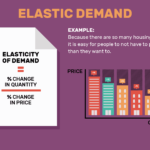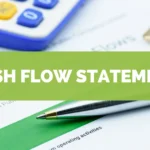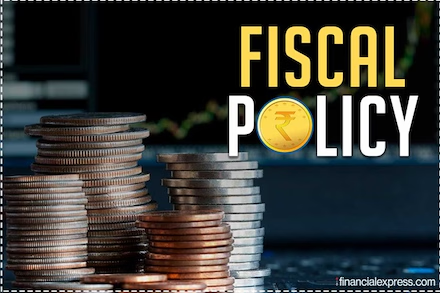Understanding Fiscal Policy: Definition, Types, and Impact on the Economy
Fiscal policy is a powerful tool governments use to influence a country’s economic performance, aiming to achieve goals like economic stability, growth, and full employment. Through adjustments in government spending and taxation, fiscal policy affects overall demand, which in turn impacts output, employment, and inflation. Understanding how fiscal policy works and its impact on the economy is essential for grasping how governments respond to economic challenges and opportunities.
What is Fiscal Policy?
Fiscal policy involves decisions made by the government regarding levels of spending and taxation. By adjusting these two components, governments can influence the economy in different ways, often with the goal of stimulating growth during downturns or controlling inflation during periods of excessive growth. Fiscal policy is typically categorized into two main types: expansionary and contractionary.
Types of Fiscal Policy:
- Expansionary Fiscal Policy
- Expansionary fiscal policy is used to stimulate the economy, typically during a recession or when there is a slowdown in economic activity. It involves increasing government spending, cutting taxes, or both, with the goal of increasing aggregate demand.
- Examples: Infrastructure projects, increased spending on education and healthcare, and tax cuts are common measures under expansionary fiscal policy. These initiatives aim to create jobs, boost consumer spending, and increase production.
- Contractionary Fiscal Policy
- Contractionary fiscal policy is implemented when the economy is growing too quickly, often accompanied by high inflation. This approach seeks to slow down economic activity by reducing government spending, increasing taxes, or both, with the aim of decreasing aggregate demand and cooling off inflation.
- Examples: Reducing government budgets, implementing new taxes, or reducing public sector jobs are some ways governments use contractionary fiscal policy to prevent the economy from overheating.
Components of Fiscal Policy:
Fiscal policy primarily operates through two channels:
- Government Spending
- Government spending includes expenditures on public services, infrastructure, defense, education, healthcare, and welfare programs. Increased spending injects more money into the economy, boosting demand and encouraging private sector activity.
- Conversely, cutting government spending can help reduce demand in an overheated economy, allowing supply to catch up and potentially easing inflation.
- Taxation
- Taxes are a significant source of government revenue, and changes in tax rates impact consumers’ disposable income and business investment.
- Lower taxes increase disposable income, which can boost consumer spending and aggregate demand, while higher taxes reduce disposable income and discourage excessive spending during inflationary periods.
Objectives of Fiscal Policy:
The objectives of fiscal policy often revolve around ensuring a stable and sustainable economy. The primary goals include:
- Economic Growth
- By influencing demand and investment levels, fiscal policy can drive economic growth. During a recession, expansionary policy is used to increase output, create jobs, and revitalize the economy.
- Full Employment
- Fiscal policy aims to achieve full employment, where most of the labor force is employed, and the economy is operating close to its potential. Higher government spending on infrastructure or incentives for private investment can help reduce unemployment.
- Price Stability
- Maintaining price stability is essential to prevent runaway inflation or deflation. Contractionary fiscal policies, like reducing spending or increasing taxes, are used to reduce inflation during economic booms.
- Redistribution of Income
- Fiscal policy is also a tool for addressing income inequality. Progressive taxation and social welfare programs help redistribute wealth within society, ensuring that the benefits of economic growth are more evenly shared.
- Debt Management
- Fiscal policy is used to manage government debt levels. Governments may run budget surpluses (tax revenues exceed spending) to reduce debt or budget deficits (spending exceeds tax revenues) to stimulate economic growth.
How Fiscal Policy Works:
Fiscal policy affects the economy through the multiplier effect, where an initial increase in spending leads to a larger overall increase in income and output. Here’s how it generally works:
- Increase in Spending → Government invests in infrastructure → Jobs are created → Workers have higher incomes → Increased consumer spending → Higher demand for goods and services → Businesses expand production.
- Reduction in Taxes → Consumers have more disposable income → Increased spending → Higher demand → Businesses expand and hire more workers.
Conversely, contractionary fiscal policy works by reversing these effects, reducing spending power, and slowing down demand.
Limitations of Fiscal Policy:
While fiscal policy is an effective tool, it has several limitations:
- Time Lags
- It takes time to implement and feel the effects of fiscal policy. There are delays between recognizing economic issues, enacting policies, and seeing their impact on the economy.
- Political Constraints
- Fiscal policy decisions are subject to political pressures, which can result in delayed or suboptimal responses. Governments may be hesitant to cut spending or raise taxes due to political unpopularity, especially near election periods.
- Risk of Increased Debt
- Expansionary policies that involve significant government spending can increase public debt, which may require future austerity measures to repay, potentially slowing long-term growth.
- Crowding Out Effect
- Higher government spending, particularly if funded through borrowing, may lead to higher interest rates. This could crowd out private investment, as businesses and consumers face higher borrowing costs.
- Unintended Economic Consequences
- Fiscal policies can sometimes lead to unintended effects. For example, tax cuts aimed at stimulating spending might primarily benefit higher-income individuals who are less likely to increase their spending proportionately, limiting the policy’s impact on overall demand.
Fiscal Policy in Action: Historical Examples:
- The Great Depression (1930s)
- To combat the Great Depression, the U.S. government, under President Franklin D. Roosevelt, implemented an expansionary fiscal policy known as the New Deal, which involved large-scale public works programs. This fiscal intervention helped to reduce unemployment and stimulate demand, aiding economic recovery.
- Global Financial Crisis (2008)
- In response to the 2008 financial crisis, many countries implemented expansionary fiscal policies. In the U.S., the government introduced the Economic Stimulus Act of 2008, providing tax rebates and other spending programs to stimulate the economy.
- COVID-19 Pandemic (2020)
- Governments worldwide employed expansionary fiscal policies to counter the economic impact of the COVID-19 pandemic. In the U.S., stimulus packages totaling trillions of dollars included direct payments to individuals, increased unemployment benefits, and support for businesses.
Conclusion:
Fiscal policy is a key instrument for managing economic stability and growth. By adjusting government spending and taxes, policymakers can influence economic activity, employment, inflation, and overall well-being. However, its effectiveness is influenced by factors like time lags, political considerations, and economic conditions. Despite these challenges, fiscal policy remains a powerful tool for addressing economic challenges and promoting sustainable growth, helping societies manage and recover from economic disruptions.











“Mind = blown! 🌟 This is exactly the comprehensive breakdown I needed. Your expertise shines through in every paragraph. Thanks for sharing such well-researched content.”